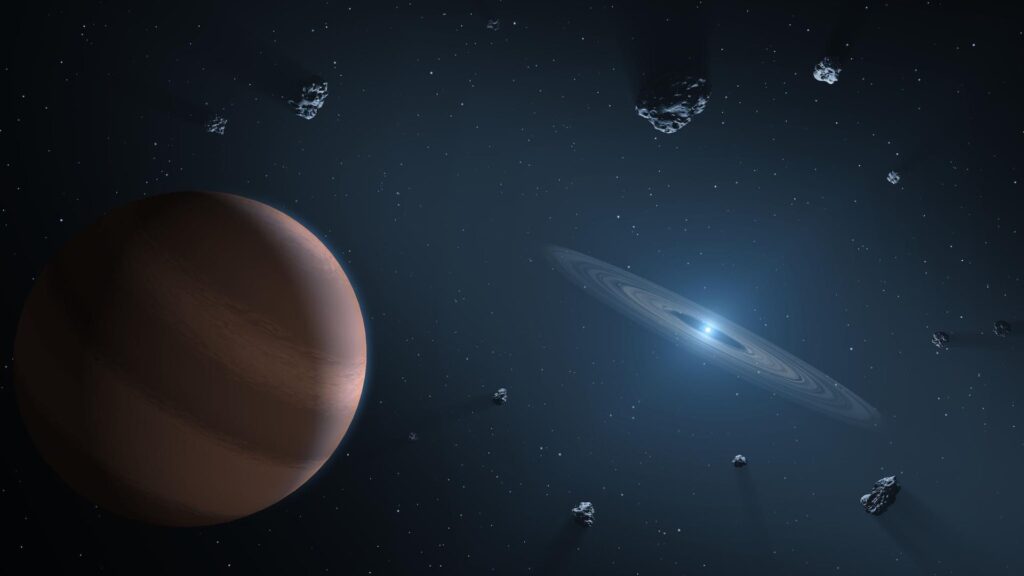
The possibility of alien life thriving on planets orbiting white dwarf stars has long intrigued scientists, but a significant obstacle has been the potential for these planets to overheat. Now, new research suggests that Albert Einstein’s theory of relativity could offer a solution, potentially rewriting our understanding of what makes a planet habitable.
White dwarfs are the dense remnants of stars similar to our Sun, and the Milky Way galaxy alone contains hundreds of millions of them. These stars can remain warm for billions of years, making them promising candidates in the search for extraterrestrial life. However, previous studies indicated that life on a planet orbiting a white dwarf would be unlikely due to the risk of extreme tidal heating.
Challenges of Tidal Heating
The habitable zone around white dwarfs is much closer than that of our Sun, ranging from one-tenth to one-hundredth of the Earth-Sun distance. This proximity means that any nearby planet could exert a gravitational pull, causing the orbit of a potentially habitable planet to become highly elliptical. This would lead to tidal heating, a process that could render the planet uninhabitable by raising its temperature excessively.
Previous research, based on Newtonian gravity, suggested that even a slight deviation from a circular orbit could doom a planet to overheating. This model, however, did not account for the complexities introduced by general relativity, which is essential for understanding the dynamics of orbits around dense stars.
The Role of General Relativity
Einstein’s theory of general relativity, which describes gravity as the curvature of spacetime, offers a more precise framework for analyzing planetary orbits. In our solar system, for instance, the precession of Mercury’s orbit around the Sun can only be accurately explained by general relativity, not by Newtonian physics.
A recent study, published on September 30 in the preprint database arXiv, applied general relativity to the orbits of planets around white dwarfs. The researchers discovered that this approach reveals a broader window of habitability than previously thought. The precession of the inner planet’s orbit, as explained by general relativity, can protect it from being pulled into more elliptical orbits, thereby preventing excessive tidal heating.
“The precession of the inner planet’s orbit ‘protects’ it from being pulled into more elliptical paths, which, in turn, prevents runaway tidal heating,” the researchers explained in their paper.
Implications for the Search for Life
While tidal heating remains a concern in certain scenarios, such as when a companion planet is too large or too close, the study suggests that many combinations of planetary systems could support habitable conditions. This finding expands the potential for discovering life beyond Earth, particularly in systems previously deemed inhospitable.
Dr. Sarah Johnson, an astrophysicist at the Space Science Institute, commented on the significance of this research. “This study not only challenges our previous assumptions about habitability but also highlights the importance of using advanced theories like general relativity in astrobiological research,” she said.
Looking Ahead
The implications of this research are far-reaching. If an alien civilization were to develop on a planet orbiting a white dwarf, it might eventually discover the principles of general relativity, recognizing the role this physics plays in its existence. This potential scenario underscores the interconnectedness of scientific discovery and the search for life beyond our planet.
As astronomers continue to explore the universe, the integration of general relativity into models of planetary habitability could lead to new breakthroughs in our understanding of where life might exist. Future studies and observations will be crucial in verifying these findings and expanding our knowledge of the cosmos.
The announcement comes as the scientific community increasingly focuses on the potential of white dwarf systems as hosts for life, offering a fresh perspective on the conditions that could support life in the universe.






